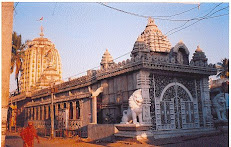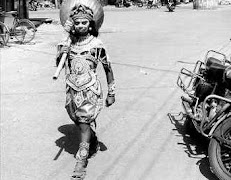For generations a tradition of innovative style of Odissi inspired by folk dances – named Ganjam Odissi -- has survived in Ganjam district of Odisha.
Recently, Sutra Foundation in association with the Malaysian High Commission organised a series of performances. Five performances were held in Odisha and outside. The inaugural performance was in New Delhi on April 13. On April 16 and 17, the performance was held in Bhubaneswar followed by one in Rourkela on April 19. The concluding performance was in Berhampur of Ganjam district on Thursday night.
The dance recitals were composed by noted Odissi guru Gajendra Panda, who hails from Ganjam district. He had started his dance career as a ‘sakhipila’ (boy dancer of ‘sakhinata’ folk tradition). Like better known ‘gotipua’ tradition, ‘sakhinata’ where boys perform Odissi existed independently in Ganjam district. Eminent Odia artist and author Dinanath Pathy, who during his childhood in Ganjam district had close links with ‘sakhinata’, was the literary and visual consultant of the production. Concept and artistic direction of the project was by Ramil Ibrahim.

Speaking to The Hindu , Mr Pathy said while thinking of the Ganjam Odissi style, one should always remember great Odissi guru from this region Debaprasad Das who had come up with the concept of ‘Tridhara’, where classical Odissi dance tradition reflects a continuum of tribal and folk forms. It may be noted that highest number of folk dance forms of Odisha have generated from the undivided Ganjam region. Lyrics of great traditional poets of Odia like Gopalkruhsna, Baladev Rath, Upendra Bhanja are integral part of Odissi classical dance and music. “So, Ganjam always remained the ground of experimentation and innovations in Odissi,” said Mr Pathy.
According to him without innovations any classical form can become archaic and get detached from the common mass. Sutra Foundation tried to provide a platform to conceive an adventurous inventory inspired by folk dances and musical compositions of Ganjam district to infuse new energy and vocabulary to Odissi, he added.
‘Sutra Dance Theatre’ artistes performed a series of Ganjam Odissi at different places, which ended in Berhampur. This package included Mangalacharn, Sthai, Ram Bhajan, Pallavi, Yogini-Moksha. ‘Sakhinata’ tradition was evident in Sthai, while in Rama Bhajan section essence of ‘Dasakathia’, another major folk form of Ganjam, could be sensed. Guru Debaprasad’s Tridhara concept to accept tribal and folk forms in Odissi was reminded through Pallavi. Yogini-Moksha depicted art as a medium of liberation.

















.jpg)


















































A particularly enlightening site. The way you have offer this information is truly to a wonderful degree appreciative. Might need to see more on this point here. A pledge of thankfulness is all together to post this information here.
ReplyDeletetop engineering college